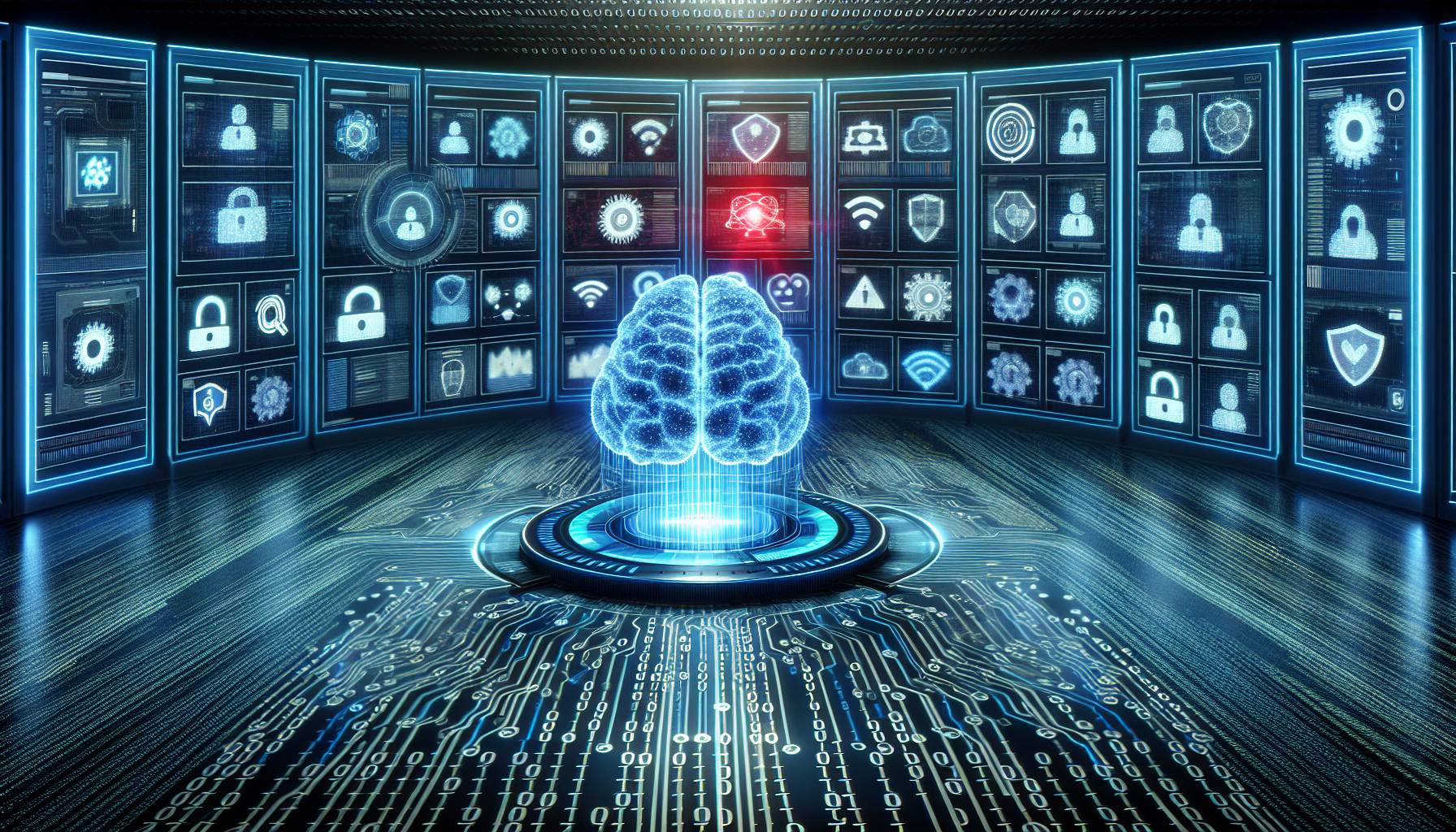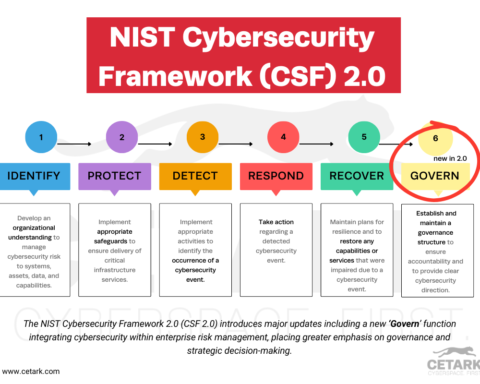How do AI and machine learning redefine the role of AI and machine learning in enhancing Continuous Threat Exposure Management (CTEM)? By equipping cybersecurity teams with tools for faster threat identification, predictive risk analysis, and precise prioritization. This article outlines these technologies’ pivotal role in enhancing CTEM’s efficiency, ensuring that organizations are adept at preempting and responding to cybersecurity threats in real time.
Key Takeaways
- AI and machine learning are revolutionizing the field of cybersecurity through enhanced real-time threat identification, predictive threat analysis, and automated anomaly detection, providing comprehensive oversight and reducing response times.
- Machine learning facilitates the prioritization and risk assessment of potential cyber threats with greater accuracy, enabling efficient resource allocation and using predictive analytics to anticipate potential vulnerabilities for proactive defense strategies.
- Implementing AI and ML in continuous threat exposure management (CTEM) strategies is becoming essential for organizations, offering advantages such as automated security control testing, breach simulations, and continuous monitoring to manage risks and maintain robust security postures proactively.
Harnessing AI for Real-Time Threat Identification

AI is rapidly reshaping the cybersecurity landscape, evolving into an agile and adaptive domain that stays ahead of emerging cyber threats. The benefits of AI in cybersecurity include:
- Simplified real-time threat identification
- Proficiency in recognizing known attack signatures and patterns
- Streamlined detection of common threats
- Timely and predictive threat analysis
These advancements in AI technology are revolutionizing the field of cybersecurity, including antivirus software, and helping security professionals to protect against evolving cyber threats. As a result, security investments in this area are becoming increasingly important.
Incorporating AI into CTEM has dramatically reduced the time security teams need to detect and respond to emerging cyber threats. It’s like having an eagle-eyed sentinel that never sleeps, constantly scanning the horizon for potential dangers. AI is not just enhancing the cybersecurity risk posture of organizations; it’s transforming it!
Intelligent Asset Discovery
Every asset, whether physical or digital, within an organization’s vast digital landscape presents a potential target for cyber threats. That’s where intelligent asset discovery, a crucial component of CTEM, comes in. Utilizing AI-driven tools, it swiftly analyzes and catalogs vast amounts of data within an organization’s digital infrastructure, effectively identifying all possible physical assets that cyber threats could target. In this process, security teams inventory assets to ensure comprehensive protection against potential risks.
AI and ML tools have significantly broadened the ability of security teams to handle real-time information. These tools not only outpace human teams in data handling but also contribute to the formulation of more robust and more efficient cybersecurity strategies. It’s like having a meticulous librarian who knows every book in the library, where it is, and who might be interested in it!
Predictive Threat Analysis
In cybersecurity, the ability to predict is a formidable asset. Machine learning excels in predictive threat analysis, studying historical data, identifying trends, and signalling potential future cyber threats. Imagine having a time machine that can foresee threats before they occur. That’s the magic of machine learning!
Machine learning algorithms play an instrumental role in cybersecurity, including:
- Detecting a variety of cyber-attacks
- Identifying patterns that suggest security risks
- Enhancing the classification and detection of cyber threats, such as fraud detection and phishing attack classification
Machine learning is our crystal ball, helping us peer into the future and prepare for it!
Automated Anomaly Detection
While not all anomalies are worrying, they often indicate potential issues in the field of cybersecurity. AI can detect unusual patterns in network traffic and user behaviour, signalling possible cyber-attacks or compromised assets. It’s like a watchdog, trained to bark at anything unusual!
AI systems utilize behavioural analytics to establish baseline patterns and identify anomalous behavior that could indicate cybersecurity risks. Moreover, AI and machine learning algorithms process and analyze vast data sets to enhance efficiency in security log analysis, reducing false positives and improving threat detection. With AI on the watch, we can rest assured that no anomaly goes unnoticed!
Machine Learning: Prioritizing Risks with Precision

Prioritization is vital in a cyber-threat environment brimming with potential risks. With machine learning stepping into the picture, the daunting task of risk prioritization has been transformed. Machine learning aids the prioritization process by automating the ranking of incidents based on their potential impact, allowing for efficient allocation of resources to the most critical threats first.
Predictive analytics further enhance the process. By analyzing current security configurations and historical data, predictive analytics anticipate potential attack vectors, improving the precision and effectiveness of threat prioritization. With machine learning at the helm, organizations can now focus their efforts where they’re needed most!
Risk Assessment Methodology
Cybersecurity fundamentally relies on risk assessment. With the aid of supervised machine learning, risk assessment is now more accurate and efficient. Machine learning supports risk assessment by categorizing network risks and predicting or classifying variables associated with specific security threats. It’s like having an intelligent filter that separates the wheat from the chaff!
The power of machine learning lies in its ability to:
- Leverage vast datasets, including historical threat data, to discern complex patterns that are difficult for human analysis
- Predictive models in AI use historical data and current trends to forecast potential vulnerabilities, enhancing focus on critical security issues
- Serve as the oracle we rely on for accurate risk assessment in the world of cybersecurity
Dynamic Vulnerability Scoring
The process of vulnerability scoring is dynamic. Threats evolve, and so should our assessment of them. Machine learning models for dynamic vulnerability scoring are trained on diverse adversarial samples to recognize complex attack vectors, enhancing predictive accuracy.
Network risk scoring with machine learning quantifies an attack’s location, likelihood, and impact, allowing for timely adjustments of vulnerability scores as threats evolve. Machine learning keeps pace as threats evolve, ensuring our vulnerability scoring remains accurate and up-to-date!
Enhancing Validation Through AI-Enabled Simulations

Once threats are identified and prioritized, the effectiveness of our existing security controls and remediation efforts comes into question. The answer lies in AI-enabled simulations, which can be considered as security investments based on their ability to validate and improve our defenses. These simulations launch controlled, simulated or emulated attacks, validating security controls and response, and remediation strategies.
AI-driven simulation tools empower organizations to create controlled environments to test a wide array of attack scenarios against their defenses without risking actual exposure. It’s like having a training ground where we can safely test our defenses and improve them, all thanks to AI!
Security Control Testing
Dynamic testing is imperative in an environment where AI systems continuously evolve through self-learning. Security controls and deployments need to adapt to these changes. It’s like having a dynamic obstacle course that changes and adapts as our AI systems evolve!
AI can fortify security by:
- Generating secure code for common tasks
- Helping developers with user authentication, data validation, encryption, and secure configuration suggestions
- Regular security assessments and ongoing monitoring are integral to AI system security, ensuring secure deployment and configurations, central to mitigating vulnerabilities
With AI, we have a powerful ally in enhancing our security control testing!
Breach and Attack Simulation
In the face of increasing cyber threats, Breach and Attack Simulation (BAS) tools have emerged as powerful weapons to reduce the attack surface. AI-driven BAS tools employ a library of real-world attack scenarios to assess an organization’s defenses.
BAS platforms enable testing of all phases of an attack cycle, from insider threats and external attack surface, through lateral movement, to data exfiltration. Post-simulation, BAS platforms generate detailed reports advising on remediation and offer a complete picture of security readiness, including external attack surface management and the testing of recovery plans.
With AI-driven BAS, we’re no longer reacting to attacks; we’re proactively testing and strengthening our defenses!
AI-Driven Mobilization for Proactive Risk Management

Given the rapid pace of cyber threats, promptness is crucial. With AI and machine learning, security teams can mobilize and respond to threats quickly, enhancing an organization’s ability to resist and recover from cyber attacks. It’s like having a rapid response team, always ready and equipped to counter threats!
AI-driven tools enhance incident response through:
- Workflow automation, promoting consistency and adherence to organizational policies
- The processing of large datasets to identify patterns and anomalies indicative of threats
- Enabling more rapid and effective cyber defense measures
With AI at the forefront of our cybersecurity strategy, we’re not just responding to threats; we’re outpacing them!
Security Automation and Orchestration
The key lies in coordination and automation within the intricate realm of cybersecurity. Security Orchestration, Automation, and Response (SOAR) tools streamline cyber-threat response by automating and coordinating tasks between various security tools and personnel. It’s like having a skilled conductor leading an orchestra, ensuring every instrument plays its part perfectly!
Machine learning algorithms learn from past incidents to continuously improve automated response strategies in cybersecurity. By automating routine tasks, we not only increase operational efficiency but also reduce the incidence of errors and application outages. With security automation and orchestration, we’re maximizing efficiency and minimizing risks!
Continuous Monitoring and Response
Maintaining vigilance holds paramount importance in the realm of cybersecurity. AI systems enhance continuous monitoring by learning from network patterns, adapting to new threats, and promptly detecting and responding to anomalies. It’s like having a vigilant guardian, always on the watch!
AI-driven continuous response mechanisms, as part of a continuous exposure management program, can:
- Automatically apply security patches
- Isolate affected systems to prevent the spread of an attack
- Provide real-time alerts and tracking of external risks
With AI, we’re not just monitoring threats; we’re continuously learning, adapting, and responding!
The Synergy between AI, ML, and CTEM
A powerful force in cybersecurity has been created through the integration of AI, ML, and CTEM. The synergy between these elements enhances the efficiency and effectiveness of continuous threat exposure management strategies. It’s like merging the powers of Superman, Batman, and Wonder Woman; the result is a formidable Justice League of cybersecurity!
Machine learning models are crucial for dynamic vulnerability scoring in threat exposure management CTEM, providing an evolving assessment of threats as they emerge. As threats evolve, our AI and ML systems learn and adapt, keeping our defenses strong and resilient. The synergy between AI, ML, and CTEM isn’t just enhancing our cybersecurity; it’s revolutionizing it!
Implementing AI and ML in Your CTEM Strategy
Far from being a luxury, the incorporation of AI and ML into your CTEM strategy is a necessity. Continuous collaboration between cybersecurity professionals, data engineers, and data scientists is essential for establishing a secure, reliable, and compliant AI ecosystem within cybersecurity practices. It’s like building a fortress, brick by brick, with every stakeholder playing a crucial role!
Traditional manual investigation methods for cyber attacks are prone to errors and time-consuming, but machine learning offers a more accurate and expedited approach to analyzing and predicting cyber threats. With AI and ML in your CTEM strategy, you’re not just enhancing your cybersecurity; you’re future-proofing it!
Measuring the Impact of AI on CTEM Effectiveness
To understand the return on our investment in AI and ML, it’s critical to measure the impact of AI on CTEM effectiveness. Establishing relevant, timely, and trackable metrics, with a clear baseline for comparison, is essential for this evaluation. It’s like having a report card for our AI systems, showing us how well they’re performing!
Different stakeholders in an organization require varying metrics to evaluate AI performance in CTEM. For instance, while security analysts might gauge the frequency and speed of resolving AI-generated alerts, senior executives may prioritize metrics like dwell time and mean time to respond. With these metrics, we can quantify the impact of AI on CTEM, ensuring we’re getting the most out of our AI investment!
The Future of AI and ML in Cybersecurity and Risk Management

The prospect of AI and ML’s future in cybersecurity and risk management is exciting. We envisage:
- Comprehensive AI assistants that could automate complex cybersecurity tasks
- Increased cyber literacy focusing on the secure use of AI tools
- A fragmented global AI regulatory landscape due to differences in approaches among nations and organizations.
Despite the challenges, the future holds immense potential. As the use of AI and ML in cybersecurity expands, we’ll continue to see innovative solutions for protecting digital infrastructure and data against potential threats. It’s not just about predicting the future; it’s about shaping it!
Summary
As we navigate the evolving landscape of cybersecurity, the transformative role of AI and ML in CTEM stands out. From enabling real-time threat identification to enhancing proactive risk management, AI and ML are revolutionizing cybersecurity. While the journey is fraught with challenges, the potential rewards far outweigh the risks. With AI and ML leading the charge, the future of cybersecurity is not just secure; it’s resilient!
Frequently Asked Questions
What is the role of AI and ML in cyber security?
AI and ML play a crucial role in cyber security by analyzing data from different sources to detect and respond to threats in real time, allowing organizations to swiftly address and investigate incidents.
What is CTEM?
CTEM stands for Continuous Threat Exposure Management and is a cybersecurity process that uses attack simulations to identify and address threats to an organization’s networks and systems. It helps organizations test their security and detect vulnerabilities before real attacks occur.
How does AI assist in real-time threat identification?
AI assists in real-time threat identification by recognizing known attack signatures and patterns, which streamlines the detection process of common threats and enables swift response to emerging cyber threats.
What role do AI simulations play in cybersecurity?
AI simulations play a crucial role in cybersecurity by assessing exposure through controlled attacks, validating security controls, and testing response strategies. This helps in evaluating and strengthening the overall cybersecurity posture of an organization.
How can AI and ML be implemented in a CTEM strategy?
To implement AI and ML in a CTEM strategy, continuous collaboration between cybersecurity professionals, data engineers, and data scientists is crucial. Additionally, automating routine tasks and continuously assessing the cyber exposure of the employed models is essential.







